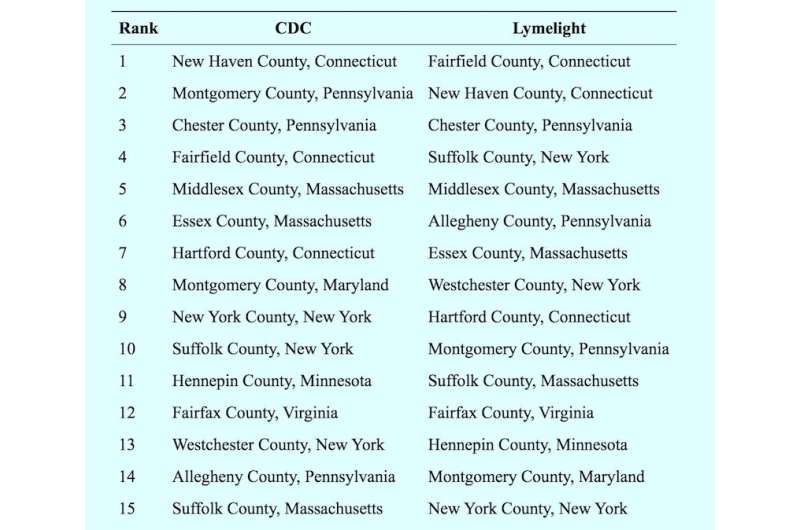Internet searches provide real-time estimate of Lyme disease risk

Lyme disease season is well underway. How much of a risk do we face for this tick-borne illness? A new method dubbed Lymelight, developed by researchers at Boston Children's Hospital and Google, can accurately estimate Lyme disease risk in real time, down to the county level.
Historically, estimates of Lyme disease have been based on reports from health care providers. But evidence suggests that these reports underrepresent the actual number of Lyme cases. In 2018, for example, traditional methods identified only 33,666 cases. In contrast, an investigation by the Centers for Disease Control and Prevention (CDC) estimated as many as 300,000 new cases of Lyme disease a year.
Unfortunately, CDC does not report its data in real time. The agency's most recently available data release is for 2018.
That's where online search data—and Lymelight—come in. In a recent study in Nature Digital Medicine, Lymelight predictions had a 92 percent correlation with estimates from the CDC.
Shedding light onto Lymelight
Today, according to Pew Research, 72 percent of Internet users are searching for their health information online. Similar to Google Trends, Lymelight analyzes trends from aggregated web search queries about symptoms or treatments for Lyme disease. (The queries are de-identified, keeping individual users anonymous.) To ensure that queries are truly relevant to Lyme disease, the tool uses a doctor-validated classifier.
"People are already using web search to look for information about health, and aggregated search trends could help us monitor illnesses in the community in a timely way, contributing back to the communities," says Yulin Hswen, Ph.D., of the Computational Epidemiology Lab at Boston Children's and the Harvard T.H. Chan School of Public Health. "You can use this kind of data to detect diseases and outbreaks earlier than traditional sources."
Other applications?
The team believes its method could be applied to estimate the incidence of other vector-borne diseases such as malaria and Zika, allowing earlier public health interventions.
"We've proven that this type of resource would be very beneficial to get an estimate of Lyme disease incidence, as well as monitor its spread, especially in developing areas," says Hswen. "This research could also be a good first step in understanding the incidence of other diseases, especially at a time when rising global temperatures are increasing the spread of vector-borne illness."
More information: Adam Sadilek et al. Lymelight: forecasting Lyme disease risk using web search data, npj Digital Medicine (2020). DOI: 10.1038/s41746-020-0222-x



















